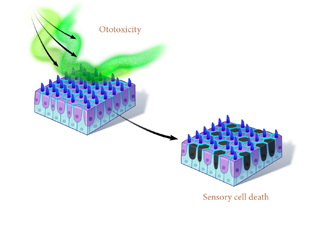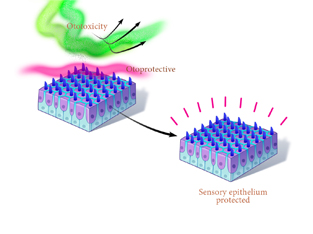MOLECULAR THERAPY
The search for novel drugs that could be used to either prevent the cochlea from losing hair cells or that could lead to initiation of a self-repair program within the cochlea has been very difficult.
We know that birds and other non-mammals are able to readily regenerate inner ear damage and we also know that age-related hearing loss does not occur in birds. Nevertheless, millions of novel drugs or compounds have never been tested for ability to prevent hearing loss or for hearing restoration. The goal of our research team is to develop novel tests for drugs that do not require working with laboratory animals. By moving drug tests from animals into the cell culture dish, we will be able to test hundreds of thousand or even millions of drugs in the next decade.
Use of human cells instead of animal cells or use of patient-derived cells will enable us to directly test efficacy of novel drugs directly on human cells, which will expedite translation of the results from the laboratory bench to the patient.
Beside screening for novel drugs, our researchers are also investigating very specific mechanisms that could be directly applicable for drug intervention. One promising area of investigation in this respect is looking at the role of thyroid hormones, which regulate the formation of the junctions between nerve cells that allow them to communicate by transmitting signals. There is a small and specific window of time when the thyroid hormones are active in the newborn baby. If researchers can track the molecular process how nerve connections are being made, they may be able to identify the genes underlying pathological processes that lead to hearing loss.
This research could lead to strategies that stimulate cochlear nerve growth and function and it might result, in the long run, in better working cochlear implants.



